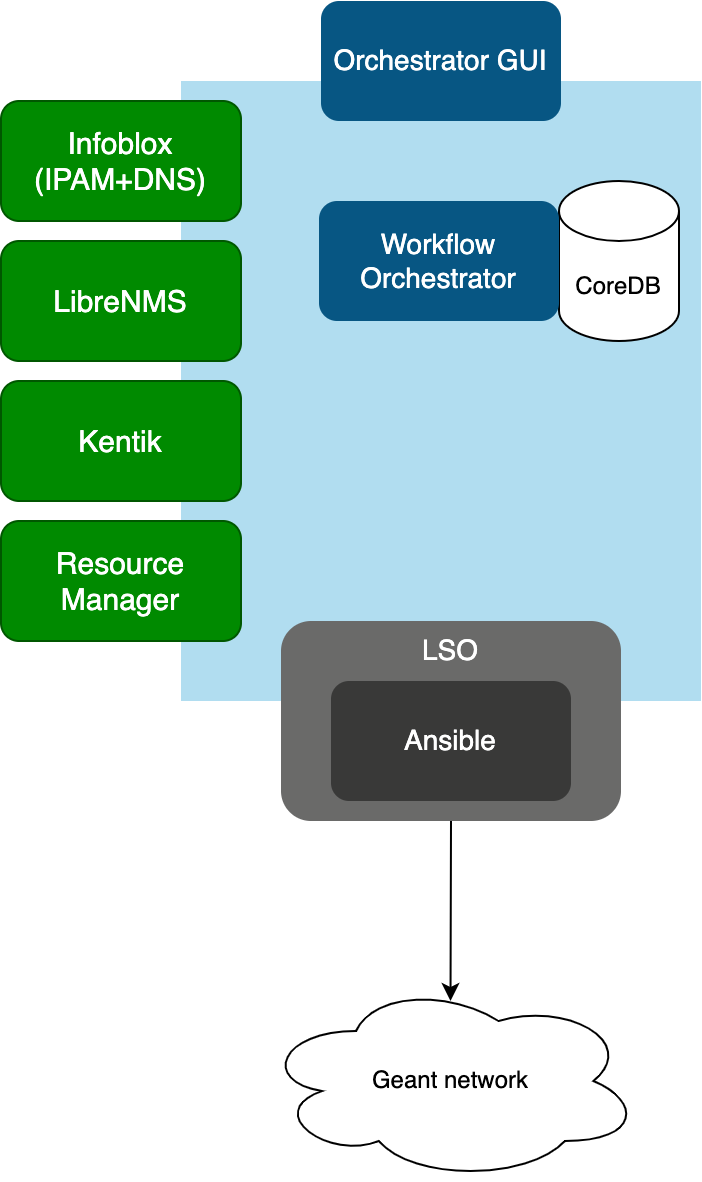Components of GAP
As stated before, GAP is a platform and not a monolithic piece of software. GAP interacts with different OSS/BSS systems already present in GÉANT and these are integrated with the automation platform.
From a high level point of view, GAP can be seen as the sum of the following parts:
-
A service database called CoreDB that stores the models of the service instances, called subscriptions. Subscriptions are abstract objects that represent functional configuration constructs: the attributes that characterize these objects are defined in the domain models.
-
An orchestration engine called Workflow Orchestrator that is capable of executing lists of steps called workflows.
-
A web interface for operators, called Orchestrator GUI to intuitively launch and inspect workflows.
-
An automation engine, Ansible, capable of interacting with network devices to configure them or to gather operational information.
-
A set of authoritative systems to manage resources:
- IP addresses and DNS names (Infoblox)
- Physical interfaces (Netbox)
To interact with these external systems, specific plugins or wrappers are in place.
An overview of how these components interact is depicted in the following diagram:
